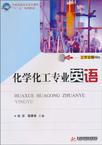化学化工专业英语
出版时间:2010-8 出版社:华中科技大学出版社 作者:张荣,鄢景森 主编 页数:158
前言
随着社会对化学化工专业技术人才素质要求的提高,具备化工专业知识技能并掌握化工专业英语的技术人才越来越受到企业尤其是中外合资企业的欢迎。为适应新时期高职高专化工专业对学生的能力培养和综合素质的要求,特编写该书。 编写过程中努力体现以下特点。 (1)所选内容尽量通俗易懂,突出职业教育特色,适合高职学生使用。 (2)所选内容适应性强,覆盖面宽,有助于学生阅读科技英语水平和专业技能水平的提高。主要内容包括化工分析、化工单元操作过程、化工设备、石油化工、精细化工、高分子化工、煤化工等。附录中设有常见酸碱盐、有机物的英文名称,常用英文化学分子式、方程式及数学式的读法,化学学科中的词缀、化学元素表、专业英语的翻译方法和技巧等。 (3)对课文中出现的化工技术术语、操作用语等都进行了注释。习题及阅读理解部分都强调了学生对化工专业技术术语及操作用语的掌握。 大庆职业学院张荣老师担任本书主编,并编写了Unit1~Unit 3、附录A~附录E。辽宁科技学院鄢景森老师担任主编,并编写了Unit 8、Unit 15、Unit 16、附录F;广东纺织职业技术学院郭俊旺老师编写了Unit4~unit 7、Unit 12、Unit 13;辽宁科技学院崔绍波老师编写了Unit 10;河南城建学院王要令老师编写了Unit 9、Unit 11、Unit 14。在本书编写过程中,北京化工大学于运花教授给予了悉心指导,并提供了许多宝贵的建议,在此表示感谢。 本教材涉及内容广,因编者水平有限,疏漏和不妥之处在所难免,恳请读者提出宝贵意见,以便完善。
内容概要
本书主要内容包括化工分析、化工单元操作过程、化工设备、石油化工、精细化工、高分子化工、煤化工等。选文侧重于实际工艺及技术操作,将基础知识与工程实际相结合。附录中设有常见酸碱盐、有机物的英文名称,常用英文化学分子式、方程式及数学式的读法,化学学科中的词缀、化学元素表、专业英语的翻译方法和技巧等。 本书可作为高职高专院校化学化工专业英语教材,也可供相关人员参考使用。
书籍目录
Unit 1 Titrimetric AnalysisUnit 2 Acid—base TitrationUnit 3 Precipitation TitrationUnit 4 Concept ofUnit OperationUnit 5 Fluid MechanicsUnit 6 PumpsUnit 7 Heat TransferUnit 8 Petroleum Refining ProcessUnit 9 Introduction to Instrumental AnalysisUnit 10 Petroleum AnalysisUnit 11 Infrared Absorption SpectroscopyUnit 12 MacroemulsionsUnit 13 Micelle FormationUnit 14 Chemical Instrumentation and Process ControlUnit 15 Fischer-Tropsch SynthesisUnit 16 Green Chemistry附录A 常见酸碱盐附录B 常见有机物附录C 常用英文化学分子式、方程式及数学式的读法附录D 化学学科中的词缀附录E 化学元素表附录F 专业英语的翻译方法和技巧参考文献
章节摘录
Measurement The predominant methods of measuring the properties of petroleum products are covered by approximately seven test methods that are used in the determination of bulk quantities of liquid petroleum and its products. Testing for suspended water and sediment is used primarily with fuel oils, where appreciableamounts of water and sediment may cause fouling of facilities for handling the oil and give troublein burner mechanisms. Three standard methods are available for this determination. The centrifuge method gives the total water and sediment content of the sample by volume, the distillation method gives the water only, volumetrically, and the extraction method gives the solid sediment in percentage by weight. The determination of density or specific gravity in the measurement and calculation of volume of petroleum products is important because gravity is an index of the weight of a measured volume of the product. Two scales are in use in the petroleum industry, specific gravity and API gravity, the determination being made in each case by means of a hydrometer of constant weight displacing avariable volume of oil. The reading obtained depends on both the gravity and the temperature of theoil. Gauging petroleum products involves the use of procedures for determining the liquid contents of tanks, ships and barges, tank cars, and tank trucks. Depth of liquid is determined by gauging through specified hatches or by reading gauge glasses or other devices. There are two basic types of gauges, in nage and outage. The procedures used depend on the type of tank to be gauged, its equip ment, and the gauging apparatus.[6] An in nage gauge is the depth of liquid in a tank measured from the surface of the liquid to the tank bottom or to a datum plate attached to the shell or bottom. The in nage gauge is used directly with the tank calibration table and the temperature of the product to calculate the volume of the product. On the other hand, an outage gauge is the distance between the surface of the product in the tank and the reference point above the surface, which is usually located in the gauging hatch. Theoutage gauge is used either directly or indirectly with the tank calibration table and the temperature of the product to calculate the volume of product. The amount of any flee water and sediment in the bottom of the tank is also gauged so that corrections can be made when calculating the net volume of the crude oil or petroleum product. There are also procedures for determining the temperatures of petroleum and its products when in a liquid state. Temperatures are deter minedat specified locations in tanks, ships and barges, tank cars, and tank trucks. For a non-pressure tank, a temperature is obtained by lowering a tank thermometer of proper range through the gauging hatch to the specified liquid level. After the entirethermometer assembly has had time to attain the temperature of the product, the thermometer is withdrawn and read quickly. This procedure is also used for low-pressure tanks equipped with gauging hatches or standpipes and for any pressure tank that has a pressure lock. For tanks equipped with thermometer wells, temperatures are obtained by reading thermometers placed in the wells with their bulbs at the desired tank levels.
图书封面
评论、评分、阅读与下载
用户评论 (总计0条)
推荐图书
- 婚姻家庭继承法
- 一间自己的屋子
- 剣より強し
- 中国“政治人”:中国公民政治素质调查报告
- 当时明月在
- 伯伯的伞
- 地球神秘事件簿(01)
- 向耶和华歌唱
- 挥霍青春
- 青之炎(04)
- 东八时区
- 辨症施治
- “自杀时代”的来临?
- 今天開始魔の自由業 9
- アラタカンガタリ~革神語~ 8 (少年サンデーコミックス) [コミック]
- 我間乱~GAMARAN~(7) (少年マガジンコミックス) [コミック]
- D・N・ANGEL 第14巻
- 京都崑曲往事
- 苗族史
- 黑玫瑰杰作集(五)——黑玫瑰,反击
- 黑玫瑰杰作集(四)——被激怒的黑玫瑰
- 黑玫瑰杰作集(三)——复仇的故事
- 黑玫瑰杰作集(一)——大战赌城
- 迷宫案·铁钉案·广州案
- 李白の月
